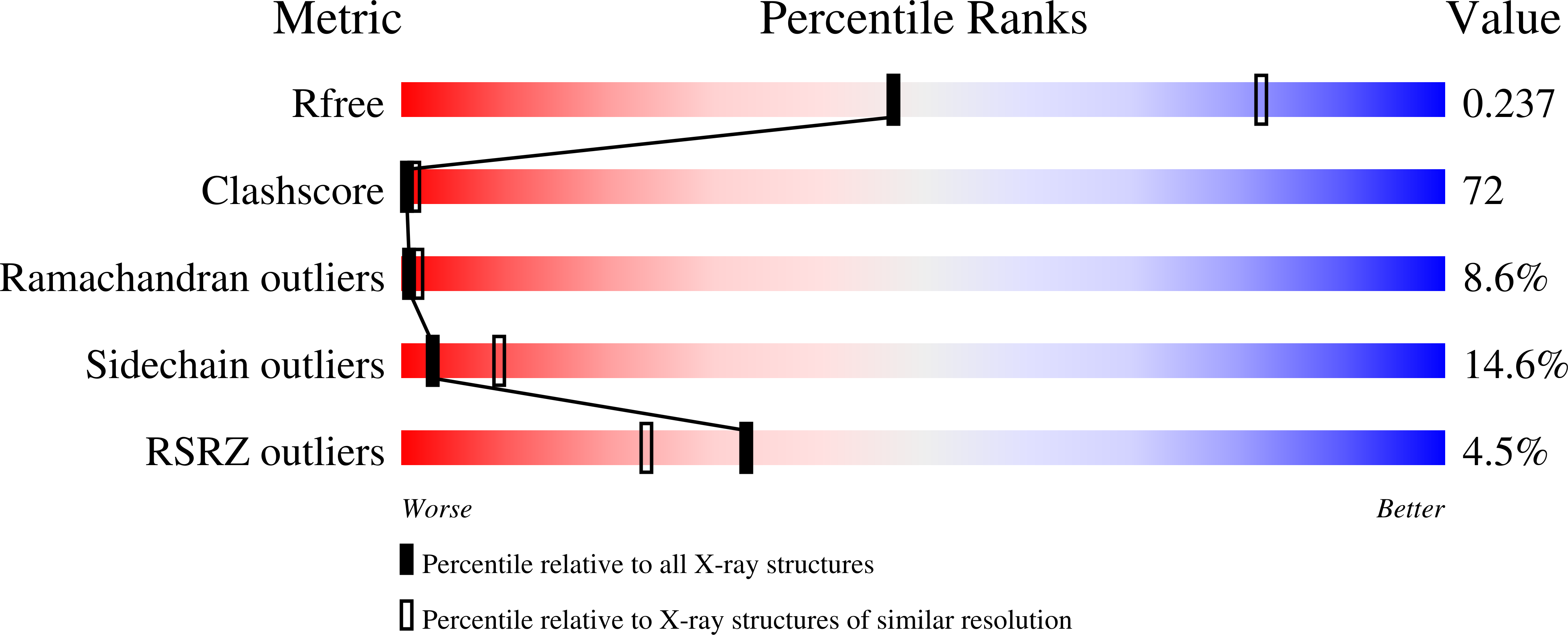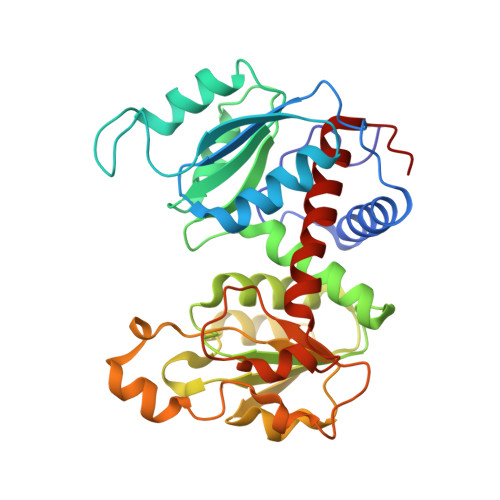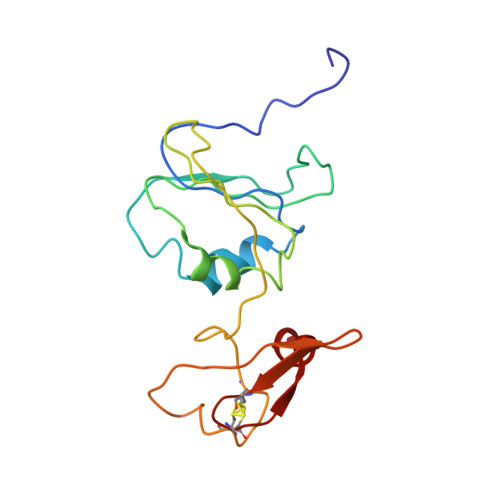The first high pH structure of Escherichia coli aspartate transcarbamoylase.
Stieglitz, K.A., Xia, J., Kantrowitz, E.R.(2008) Proteins 74: 318-327
- PubMed: 18618694
- DOI: https://doi.org/10.1002/prot.22162
- Primary Citation of Related Structures:
3D7S - PubMed Abstract:
The activity and cooperativity of Escherichia coli aspartate transcarbamoylase (ATCase) vary as a function of pH, with a maximum of both parameters at approximately pH 8.3. Here we report the first X-ray structure of unliganded ATCase at pH 8.5, to establish a structural basis for the observed Bohr effect. The overall conformation of the active site at pH 8.5 more closely resembles the active site of the enzyme in the R-state structure than other T-state structures. In the structure of the enzyme at pH 8.5 the 80's loop is closer to its position in R-state structures. A unique electropositive channel, comprised of residues from the 50's region, is observed in this structure, with Arg54 positioned in the center of the channel. The planar angle between the carbamoyl phosphate and aspartate domains of the catalytic chain is more open at pH 8.5 than in ATCase structures determined at lower pH values. The structure of the enzyme at pH 8.5 also exhibits lengthening of a number of interactions in the interface between the catalytic and regulatory chains, whereas a number of interactions between the two catalytic trimers are shortened. These alterations in the interface between the upper and lower trimers may directly shift the allosteric equilibrium and thus the cooperativity of the enzyme. Alterations in the electropositive environment of the active site and alterations in the position of the catalytic chain domains may be responsible for the enhanced activity of the enzyme at pH 8.5.
Organizational Affiliation:
Department of Chemistry, University of Massachusetts, Boston, Massachusetts 02125, USA. kimberly.stieglitz@umb.edu
















